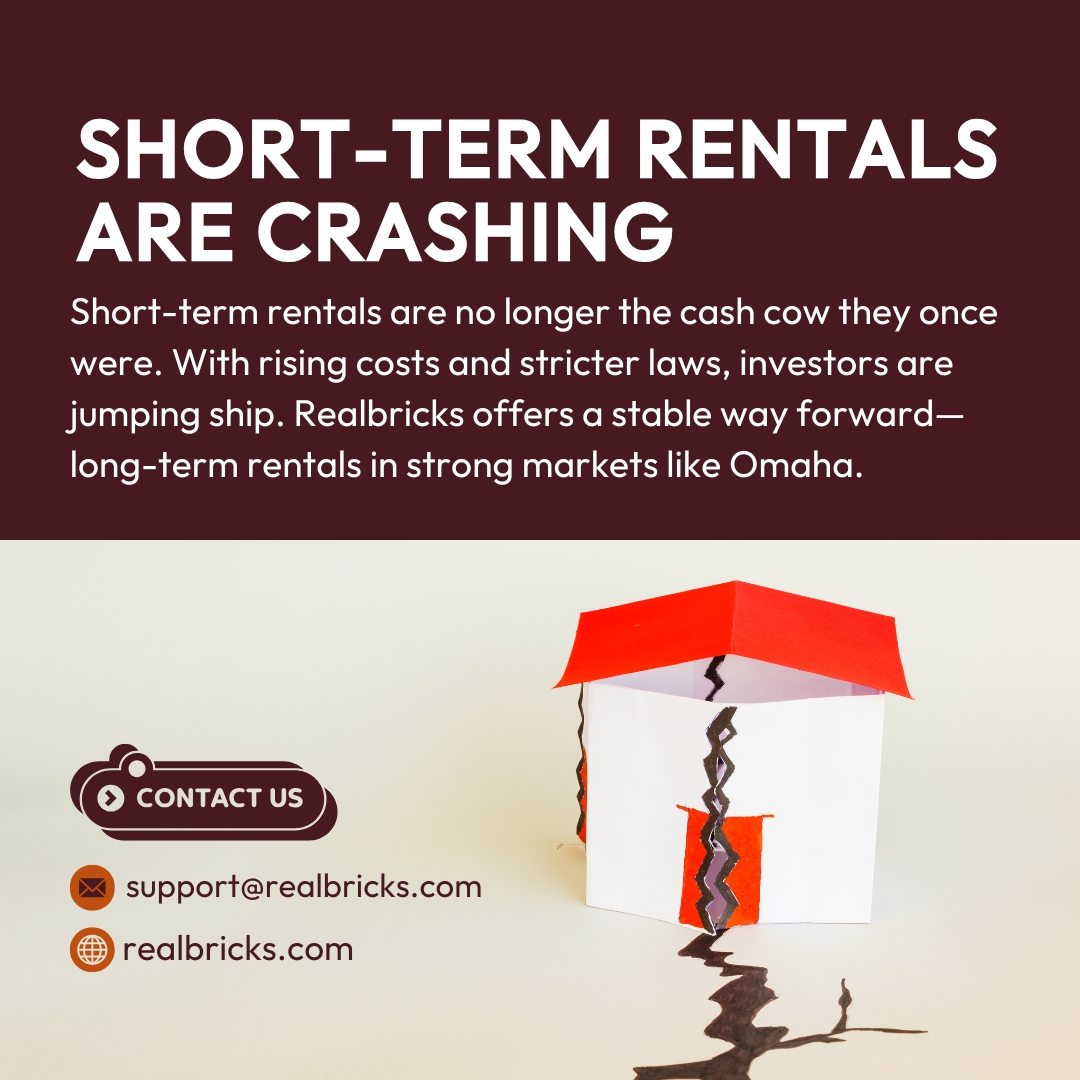Explore the risks facing short-term rentals in 2025 and why long-term rentals offer more stability for today’s real estate investors.

Short-term rentals (STRs) have long been a go-to for investors chasing high returns, fueled by the rise of platforms like Airbnb and Vrbo. But in 2025, the landscape is shifting—fast. What once seemed like a goldmine is now showing signs of instability, as STR investors across the country face skyrocketing insurance premiums, declining occupancy, and stricter local regulations.
With some experts predicting that 1.5 and 2.3 million former short-term rental properties will return to the long-term housing market over the next 24 to 36 months, real estate investors are facing a historic turning point. For those seeking stability, long-term rentals (LTRs) are emerging as the more resilient strategy—and platforms like Realbricks, focused on LTRs in recession-resistant markets like Omaha, are well-positioned to lead the way.
Short-term rentals took off in the 2010s, offering:
At the peak of the STR boom, investors were achieving impressive cash-on-cash returns, fueled by low interest rates and travel demand surges. But with shifting market dynamics, many of those returns are no longer sustainable.
One of the biggest pain points for STR owners in 2025 is rising property insurance. According to the Insurance Information Institute, average annual premiums in high-risk states like Florida, Louisiana, and Oklahoma now exceed $2,100. Many STR investors report even steeper increases—sometimes over 100%—particularly in tourist-heavy or disaster-prone regions. In some areas, insurance carriers are limiting or withdrawing STR coverage altogether due to high claims and risk exposure.
These factors are driving many carriers to either increase premiums dramatically—or exit the STR market altogether.
A widely circulated investor analysis compiled from sources like AirDNA, Redfin, and private mortgage data paints a stark picture:
Markets with high STR density are particularly vulnerable to price drops if these properties flood the resale market.
According to AirDNA and Bloomberg:

Amid this uncertainty, Omaha stands out as a real estate market built on long-term fundamentals. Here’s why:
These attributes align with nearly every key metric smart investors should look for when evaluating a market.
The short-term rental model delivered strong returns during its peak, but the current environment reveals deep structural vulnerabilities—from rising insurance costs and falling occupancy rates to looming loan resets. While some markets will weather the storm, others may face sharp corrections as investor-owned properties hit the market all at once.
Long-term rentals, on the other hand, continue to offer consistent returns, lower volatility, and fewer regulatory surprises—especially in recession-resistant cities like Omaha.
For investors looking to protect their capital and grow it over time, shifting focus to long-term rental properties in stable markets may be one of the smartest strategies of the decade.
Here are four Realbricks properties available now:
These homes are already rented and professionally managed, offering projected quarterly dividends without the unpredictability of short-term guests.
Disclaimer: Investing in real estate involves risks, including the potential loss of capital. This content is for informational purposes only and is not intended as investment advice. Investors should perform their own research and consult with financial professionals before making investment decisions.
Be the first to know about property launches, portfolio updates, and announcements by subscribing to our newsletter.